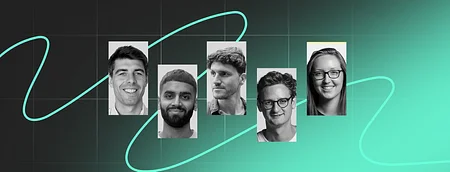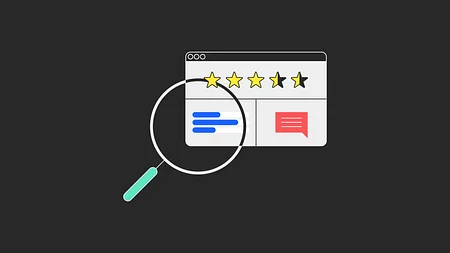Designers are not the centre of the universe

Designers can all too easily think design is at the centre of the universe. Perhaps sometimes it can be a self-indulgent activity where it's no longer design for people, but for other designers. Maybe it’s good to have a reality check.
This is taken from our Unfiltered newsletter. Subscribe now for a no BS, uncensored analysis of fintech news and hot topics delivered to your inbox each fortnight.
At its core, design is about improvement - making something better because of an identified flaw in the current solution. This can take any form, from planning a more efficient route to work or implementing a new way of working to increase productivity. To that end, we’re all designers. You might solve problems for others or create services that help others solve problems. You might be a designer in the broadest sense or a design thinker.
It takes a team
Great products are not built in silos. Customer experience isn’t just the responsibility of a UX designer. The success of an experience is formed by the blending of individuals’ skill sets, perspectives and sensibilities with the customer at the heart of the thinking.
The success of an experience is formed by the blending of individuals’ skill sets, perspectives and sensibilities with the customer at the heart of the thinking.
We need to start thinking about the ‘Total User Experience’. This is an experience designed following customer insight, aligned to an overall business strategy and made a reality by engineering and product teams. Marketing teams drive the growth that surrounds it.
Designing for the ‘Total User Experience’ is impossible without a blended team.
So what should this journey look like?
The user flow should be informed, shaped and designed by rich customer-driven data and insight. This is where we unlock the true nuances of a problem that the customer may be struggling to solve. Close alignment between customer strategists and design at this stage in a project ensures that we can progress with a singular vision.
This flow should also take into consideration the overarching business strategy - which should, again, be a blend of customer insight and business goals.
Next, design. This is a collaborative process where hypotheses are put forward to meet the needs of the user and work for the business. They’re brought to life by the designer.
Once you’re confident the newly designed solution meets the needs of the customer and the business, it’s over to the engineering teams. If your engineering involves a lot of legacy tech and it takes you two weeks to release, you will never deliver a top-notch product. No matter how good your designer is. The best products are the result of early engineer involvement, meaning a common goal and a common solution. Here, designers can push engineers to find solutions to the ask and engineers can challenge designers to unlock potential via technology.
And then we go round the cycle again. Design is at the heart of the user-centred design process - but it’s not everything. Designers are just one player in an ecosystem. Ultimately the whole team needs to be working well to deliver.
Giving away the design keys
Us designers need an ego check. We don’t hold the key just because of our title. Recognising the design potential in our teams is a challenge to broaden our skillset. It challenges us to share the keys to design methodologies, which will ultimately make us better designers and uplift our teams too.
When I think about this model of design, I think about the Kaboom framework. Kaboom are playground creators in the US. After an initial period of growth, they realised that they could actually spread their skills wider, while continuing to make money, if they gave away their methods for free. As others learned and benefitted from their process, investors and buyers recognised Kaboom as the playground authority.
As designers, the more we bring people in, the more we get back. Teaching other people how to use design methods and design practices upskills our team as we build stronger relationships with likeminded people. And it lets us show off our skills! Revealing our most closely guarded secrets doesn’t make them any less valuable - it just shows people how good we are.
Take the client on that journey
We can’t forget our clients are part of our teams. Too often, there can be a silo between a client and the design team and silos within the client’s organisation. If your client doesn’t understand where the design is coming from, they’ll overrule it and all the hard work will go to waste.
It’s essential that we include clients in our ways of working and upskill them in design methodologies so they can be active participants. At 11:FS, we make a point of developing these relationships with clients. It’s one of the reasons that I find work here to be so productive and creative.
It’s essential that we include clients in our ways of working and upskill them in design methodologies so they can be active participants.
This makes it easier to be honest with the client when needed as well. A productive relationship is based on trust. If you can explain to your client why a particular decision was made and base it on the shared experience of working through the design process together, they’ll get it. If your stakeholders feel that you’re a person that genuinely wants to listen to their needs and help them with your expertise, you’ll hit the jackpot.
My unfiltered opinion
It’s time for designers to realise they’re not the centre of the universe. They’re not the key holder or the most important part of the machine.
Strong designers are, in fact, facilitators. They’re able to bring together user needs, business and technology, all while taking the client along on the journey and showcasing the power of design.




